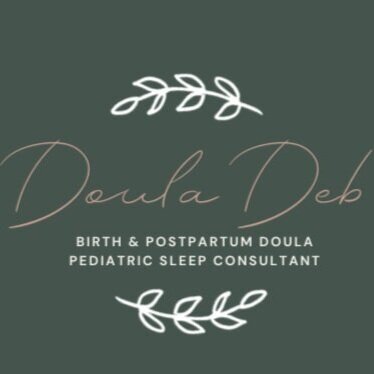Beyond the Latch: How Tongue Ties Shape Airway, Sleep, and Development (Guest: Brittany Hageman)
Listen to the Podcast!
When you’re pregnant or in the early postpartum days, you’re already juggling so much. From feeding schedules and diaper blowouts to that endless question of, “Why won’t my baby sleep?” And then someone mentions a tongue tie, and suddenly you’re down a Google rabbit hole, wondering if this tiny piece of tissue under your baby’s tongue could be the root cause of everything.
Here’s the truth: tongue ties aren’t just about breastfeeding struggles. They can affect airway development, jaw and facial growth, speech, sleep, and even your child’s overall health. In my recent conversation with myofunctional speech therapist Brittany Hageman, we unpacked how ties can impact babies far beyond the newborn stage and what you, as a parent, can do about it.
Let’s dive in.
What Exactly Is a Tongue Tie?
A tongue tie happens when the thin piece of tissue (the frenulum) under the tongue is too short or too tight, restricting movement. While everyone has a frenulum, in some people, it doesn’t recede properly during development, creating a restriction that can interfere with how the tongue moves.
Why does this matter? Because the tongue isn’t just for feeding. It’s the driver of oral and facial development. When the tongue can’t rest on the palate (the roof of the mouth), it can lead to a high, narrow palate, reduced airway space, and changes in jaw alignment. Over time, this can lead to crowded teeth, mouth breathing, speech difficulties, and even sleep-disordered breathing, such as snoring or sleep apnea.
Signs Parents Should Watch For
Most parents first hear about tongue ties when breastfeeding is painful or ineffective. But Brittany emphasized that ties show up in many ways, even with bottle feeding and solids. Here are a few red flags:
Trouble latching or staying latched (breast or bottle)
Clicking sounds while feeding
Excessive gassiness, reflux, or spitting up
Lip blisters from compensating during feeds
Snoring, noisy breathing, or open-mouth posture
Restless sleep or frequent night wakings
Difficulty chewing solids or managing textures
Recessed chin, long face, or dental crowding as they grow
Dark circles under the eyes (“allergic shiners”)
If your gut is telling you something is off, trust it. Parents usually notice subtle signs long before providers do.
Why Airway Health Matters
Airway health is at the core of everything. If your baby can’t breathe well through their nose, feeding becomes harder, sleep becomes restless, and overall development gets disrupted.
A restricted tongue can cause the palate to grow high and narrow, crowding the nasal passages and making it harder to breathe. This can lead to chronic congestion, enlarged tonsils, and mouth breathing, which in turn affects sleep quality and oxygen flow to the brain.
And we all know: when sleep goes down, tantrums and meltdowns go up, for kids and parents alike.
How Tongue Ties Impact Development Over Time
Here’s the big picture:
Jaw and Facial Growth – Without proper tongue pressure on the palate, the upper jaw (maxilla) grows narrow, and the lower jaw may recede. This can lead to asymmetry, TMJ issues, and a “long face” appearance.
Chewing and Swallowing – Instead of smooth, efficient chewing, kids may overuse their lips and jaw, creating uneven muscle development. They may struggle to move food from side to side, which can lead to cavities or texture aversions.
Speech – Sounds like T, D, L, S, Z, N, and R can be distorted if the tongue doesn’t have a full range of motion. Some kids compensate, but it takes more effort and therapy later on.
Sleep – A compromised airway can cause snoring, restless nights, or even sleep apnea. And poor sleep affects learning, mood, and growth.
The good news? Early intervention makes a huge difference. Babies’ palates and cranial bones adapt quickly, so therapy and small changes now can prevent bigger issues later.
What Parents Can Do Right Now
Feeling overwhelmed? Take a breath. You don’t need to figure this all out alone. Here are some practical steps Brittany shared that you can try right away:
Encourage Nasal Breathing - Check your baby’s tongue position during sleep. Is it resting up on the palate, or hanging low in the mouth? Gently supporting the tongue upward can help retrain that posture over time.
Support Chewing Skills - Chewing builds jaw strength and promotes healthy oral development. Don’t rely solely on purees and pouches (though they have their place). Offer safe, firm foods like carrot sticks in a mesh feeder or even a mango pit for gnawing.
👉 Tools that help:
EZPZ Developmental Cup Set – supports open cup and straw drinking skills that encourage proper tongue posture.
NinniCo Pacifiers – designed to mimic breastfeeding, protect palate development, and encourage a healthier latch. You can also use my affiliate link here for a discount.
TalkTools Oral Motor Tools - fun, effective tools created by speech therapists to strengthen oral muscles and promote chewing, swallowing, and tongue mobility.
MyoMunchee - a simple, chew-based tool that supports jaw strength, tongue posture, and nasal breathing. Available in versions for babies, kids, and adults.
Limit Pacifiers and Sippy Cups - Extended use of hard pacifiers or sippy cups can change palate shape and bite alignment. Brittany recommends soft, nipple-like pacifiers (like NinniCo) and straw cups instead of hard-spout sippy cups.
Try Oral Motor Exercises - Simple activities like tongue clicks, humming, or practicing lip closure can strengthen muscles and promote proper function. These don’t replace therapy but can be powerful at home.
Seek Professional Support - If you suspect a tongue tie or airway issue, seek out a myofunctional therapist or speech-language pathologist trained in oral motor therapy. Pairing this with craniosacral therapy can also support mobility and function. If needed, tongue tie releases may be part of the solution, but therapy before and after is crucial.
The Bigger Picture: Root Cause over Quick Fix
It’s tempting to “wait and see,” but small issues now can snowball into bigger struggles later like braces, orthodontic surgery, sleep apnea, or speech therapy. Addressing tongue ties and airway development early isn’t about overreacting; it’s about prevention.
And remember: it’s never too late. Adults can still benefit from myofunctional therapy, tongue-tie releases, and retraining of patterns. But the earlier you catch it, the easier the journey will be.
Free Resource: Airway & Tongue Tie Checklist
If you’re wondering whether your baby or child shows signs of a tie or airway issue, Brittany has created a free PDF checklist of symptoms. This resource helps you spot concerns and bring them to your provider with confidence. You’ll find the link in the show notes of the podcast episode.
Final Thoughts
Pregnancy and postpartum come with enough unknowns. You deserve clarity when it comes to your baby’s health. Tongue ties and airway development may not be on your radar yet, but they’re worth paying attention to.
Here’s the takeaway: trust your instincts. If something feels off, you’re not imagining it. Keep a notebook of symptoms, use the checklist, and find providers who will listen. Supporting your baby’s airway and oral development today can set them up for better sleep, easier feeding, clearer speech, and healthier growth tomorrow.
And remember, you don’t have to figure this out alone. I’m here to walk alongside you with evidence-based guidance, practical resources, and the reminder that you are doing an incredible job.
✨ Want more? Listen to the full episode with Brittany on Doula Talk: Postpartum, Babies, and the Battle for Sleep and grab your free checklist today.
Podcast Guest:
Brittany Hageman
Coastal Myofunctional and Speech Therapy
Brittany is a speech therapist, a myofunctional therapist (orofacial myologist), and has infant cranial sacral training. She is the co-leader of the Puget Sound TOTs Club for Professionals. Brittany has been an SLP for 12 years, and last year she had her own tongue tie released along with her children. This experience profoundly changed her life, from her tongue to her pelvis, and it helps her empathize with what others may be going through. She has also worked with many older children struggling with /r/ or /s/ sounds or tongue thrust, all of whom had significant Tethered Oral Tissues (TOTs) impacting their speech and orofacial development.
She is passionate about helping babies, kids, and adults navigate pre- and post-exercises needed to prepare for the release of Tethered Oral Tissues. Brittany advocates for patients and families, providing rehabilitation for the orofacial muscles of the tongue, lips, cheeks, and jaw, and supporting optimal palatal development. She offers both in-person and teletherapy services depending on the area being worked on. The goal of therapy is to strengthen the muscles of the tongue to promote optimal tongue posture, improve nasal breathing, feeding skills (for babies and toddlers), and establish correct swallowing patterns. Brittany is happy to share her story if it can help just one person.
Get in touch with Brittany!
Website: https://coastalmyofunctionalspeechtherapy.com
Facebook: https://www.facebook.com/coastalmyofunctionalspeechtherapy/


